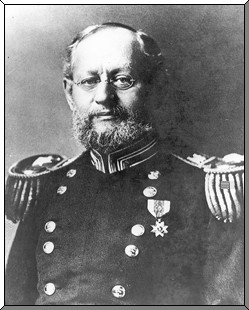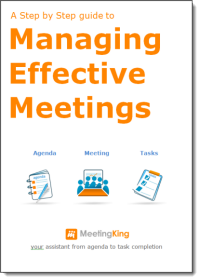
Robert’s Rules of Order is a book that was first published in 1876, by US Army Brigadier General Henry Martyn Robert that provides a suggested structure of how to run meetings effectively.
As the story goes, Robert had to lead a church meeting in 1863 and he felt inadequately prepared for such a responsibility. This piqued an interest for him in parliamentary procedures which were ways of running parliamentary meetings. Through his research and investigations he discovered that there was not one universally accepted way of running meetings, so he decided to publish a book on the subject that would clarify best practice.
While the rules are based on parliamentary procedures, in fact they are designed for and intended to be applied to the meetings of any organization. The book Robert’s Rules of Order is currently in its eleventh edition, and is still an excellent reference point for those wanting a definitive resource of how meetings should best be run.
Robert’s Rules of Order Explained and Simplified
Following Robert’s Rules of Order when creating meeting minutes will allow you to run effective and well-organized meetings.
Some of the main aspects of Robert’s Rules are mentioned below. The language used in Robert’s Rules is very formal, so more down-to-earth terminology has been included. These guidelines will help people to hold more productive meetings.
Robert’s Rule Agenda – According to Robert’s Rule, all meetings should follow a strict agenda that adds structure to the meeting. The agenda should be prepared before the meeting and should be followed from top to bottom. Each point should be addressed and discussed before moving on to the next. Using a meeting minute tool such as MeetingKing will make this step much easier, providing proper structure to the meeting. MeetingKing has various meeting agenda templates created in accordance with Robert’s Rules of Order. More information on templates.
Motion – motions are used to discuss a new item of business. They are introduced on the agenda, and can also be suggested at the meeting. The word “motion” is quite old-fashioned in many organizations, but it means an idea or subject for discussion. Motions can also be used to suggest an action to be taken or a decision that should be made by the organization. Motions must be made and seconded by a different person (a person who seconds a motion is someone who supports it), debated and then voted on. If there is no second or in other words, no support for the motion, it is dropped.
Postpone Indefinitely – this move is taken if a motion is to be not discussed further at this meeting, though it may be reintroduced again at a later meeting. The decision to postpone indefinitely must be seconded and voted on. The Parking Lot functionality in MeetingKing allows you to do this by letting you move topics there during the meeting.
Table – this action is used to postpone discussion of an item until later in the meeting or at a later date. Again, the decision must be seconded, and voted on. This is also the same as the idea of moving a topic to the Parking Lot in MeetingKing.
Question – this can be used to terminate a debate so that a motion can be voted on. As with all of the other actions, it needs to be seconded by a different person. Directly after this a vote is held and a two-thirds majority is needed for it to pass. In the case of the vote passing, the motion is then voted on directly.
Amend – sometimes a motion needs to be changed after it has been debated a bit. Someone might suggest an amendment, and in this case, it must be seconded to be voted on. If accepted, the amendment stays. It can occur that someone suggests an amendment to a motion from a previous meeting. This is where a meeting minutes tool such as MeetingKing can really come in handy. MeetingKing stores all the information of previous meeting, so that all of minutes are available at your fingers tips when you need it.
Commit – one step that can be taken with motions is to have them researched further by a separate committee and reported back on at the next meeting. This job might be assigned to an existing committee or a newly organized committee. It must be seconded and be passed by majority vote for this action to occur. Such items can be added as tasks in MeetingKing. That way it is clear for everyone involved in the meeting who will be doing what and when the deadlines are. These items can also be added as topics for the next agenda so they are not forgotten about.
Adjourn – someone will make a motion to end the meeting. Once again, this motion must be seconded and followed by a vote to adjourn the meeting. The agenda helps to set a time and schedule and usually the chairman will call to end the meeting. If applicable a follow-up meeting should be scheduled. In MeetingKing this can be done with one click and all relevant information, including tasks from the previous meeting(s) are added to the new agenda automatically.
Rober’s Rules Minutes – the minutes of the meeting will be documented throughout and distributed to the attendees—and those invited who could not attend—after the meeting is over. Robert’s Rules requires that only the main motions are documented in the minutes. One of the best things about MeetingKing is that it supports the making of meeting minutes in a simple manner, following Robert’s Rules. MeetingKing formats notes automatically, so there is no extra work to be done. Decisions and tasks are also included and are tracked in the system, for easy management and reliable follow-up. MeetingKing has various meeting minute templates which are ready to use, or which you can easily modify for your own needs.
Using Robert’s Rules of Order when writing meeting minutes
Robert’s Rules of Order is a way to ensure that every member involved in the meeting has been heard, and that no information is forgotten. By discussing every action point, conversation topics and ideas, no one or no information is left behind.
Robert’s Rules do not all need to be followed during your meeting, you can also choose to follow a few or take some of its key principles and implement that into your own structure. If you find that your template or system isn’t working you can always return to this guide and pick up some extra tips.
More information on Robert’s Rules of Order
The official Robert’s Rules website has more information: http://www.robertsrules.com/
Another Robert’s Rules source of information is: http://www.robertsrules.org/
The table of rules from the 4th edition (the last one that Robert himself published) can be found at: http://www.bartleby.com/176/91.html


